June 17, 2021 | by Ted Behr by Jeane Beatty

Celebrating 144 Years of Hope and Healing
Wayne Presbyterian and The Presbyterian Children’s Village
By Jane Beatty
The year was 1877 when 30 concerned Philadelphia Presbyterian women asked a growing societal question: How to best care for orphans and “near orphans,” children with only one parent, in a nurturing, compassionate, home-like way instead of in government-run almshouses and large, barrack-like orphanages?
Losing little time, in 1878 these determined women arranged to host 12 children between three and eight years old in a house at 1319 South Broad Street (eight came from Bethany Presbyterian Church’s Home for Orphans which was closing). They challenged area Presbyterian churches to contribute money, furniture, and food. The churches responded: $1,000 was raised and furniture and food, from jam to eggs, appeared. A cook and a “competent” teacher were hired and the children attended the nearby Presbyterian Holland Mission Church.
The “lady directors,” led by Mrs. Daniel Haddock, Jr. organized daily life while ten “gentlemen advisors,” including John Wanamaker, oversaw finances (It wasn’t until 1943 that men joined the Board.
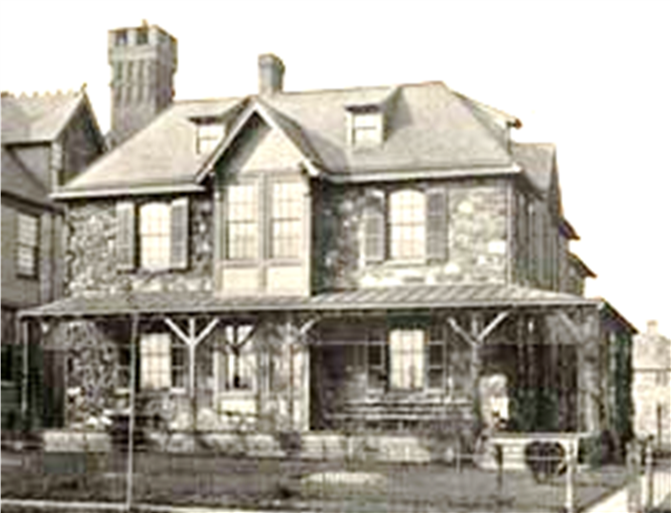
The Presbyterian Orphanage, conceived and constructed in 1878 through the energy of 30 Presbyterian women and their generous supporters. Nine acres of land at 58th St. and Kingsessing Ave. had been donated by Mrs. Anne Gray Thomas. The original roof line and details are visible today in the present Myers Recreation Center.
The Orphanage grew quickly. By 1879, with 36 children cramming the Broad Street home, the Directors searched for “a spacious home in the country” and accepted the gift of nine acres in Southwest Philadelphia from Mrs. Ann Gray Thomas, across Kingsessing Avenue from the stately Presbyterian Home for Widows and Single Women established five years previously.
The women researched “best practices” and raised an astonishing $14,621 to build four handsome and home-like cottages, each housing 20 children and its housemother. (Today, two of those cottages at the corner of 58th Street and Kingsessing Avenue form the nucleus of Cornerstone Christian Academy, which Wayne supports with considerable volunteer and financial help.)
In 1890 the Directors voted to keep girls until they were 18, “…seeking to train them… to take their places in the world as Christian women and feeling we might guard them better under our own care…” They voted to keep boys until they were 15 (eventually, 18) so that “…we could hope for a better educated, more intelligent set of boys…who are our future citizens, controlling the ballot box and the government of our country.”
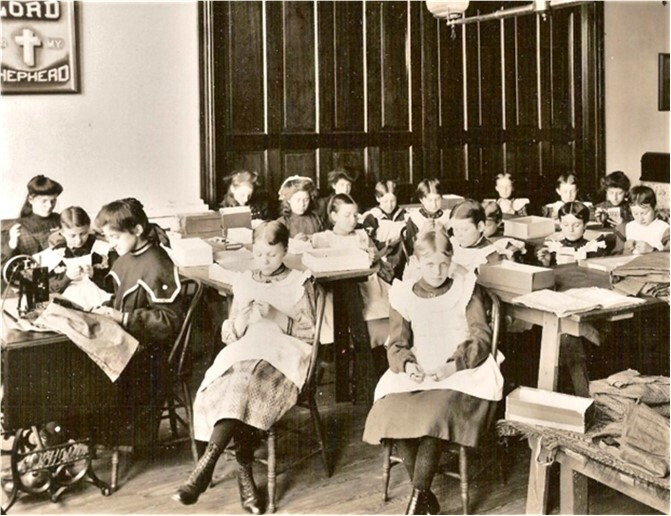
After school enrichment: Serious young ladies at the Presbyterian Orphanage at the turn of the century carefully thread their needles to hem table place mats. During school hours they attended local public schools. Beginning in 1915, they trooped up Kingsessing Avenue to the new Mitchell Elementary (which is still nurturing Southwest students today!)
The children attended school on the campus until 1900 when all of the children except kindergartners were sent to local public schools. In 1915 they transferred to the newly built S. Weir Mitchell School two blocks away. (105 years later, Mitchell Elementary still serves the community, with dozens of Wayne Presbyterian involved in a volunteer partnership with the school since 1990 through our CityLights program.)
The spiritual life of the children was greatly enhanced beginning 1906 when Westminster Presbyterian Church was built on the adjacent corner of 58th Street and Chester Avenue. One young boy recalled that while the children mostly adhered to Orphanage rules, at least one girl and boy held hands beneath a shared hymnal during church services, breaking the rule that girls and boys were not allowed to develop relationships!
The Orphanage flourished during the first 30 years of the 20th century, building the Mershon Infirmary, creating an endowment, and receiving gifts of two Jersey Shore vacation houses (one from John Wanamaker), requiring girls to acquire and wear beach coats. At some point, there was a merger with the Haddock Memorial Home which brought infants and babies to the Village for the first time.
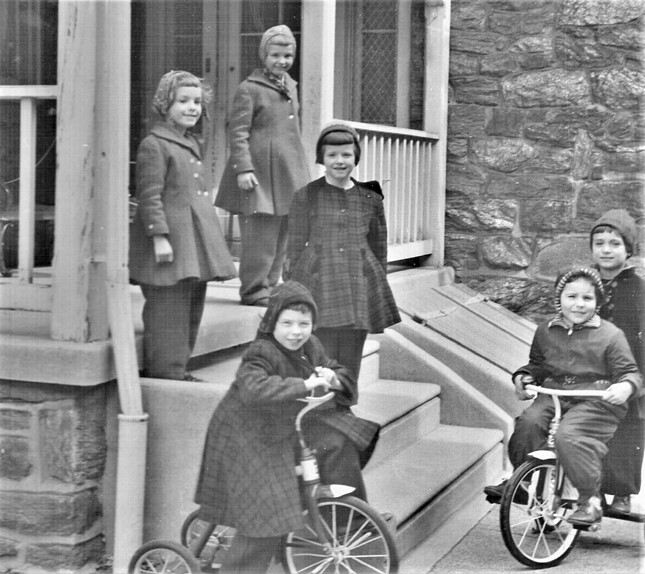
On the open East Porch of the dormitory, children enjoy playtime away from their studies at Mitchell Elementary School a few blocks north on Kingsessing Avenue. This porch was recently transformed into the new Cornerstone Christian Academy library by the Hammers with Hearts team at Wayne Presbyterian and other hardy volunteers.
Frugality was the watchword. In 1928 the daily cost per child was 37 cents and the Managers (formerly the Directors, still all women) were admonished to keep expenses down! In 1931, the 36 Managers “promised to be friends of some of the children, occasionally taking them home and on outings, a custom that prevailed until the early 1980’s. The extent of Wayne Presbyterian involvement during this period is not recorded.
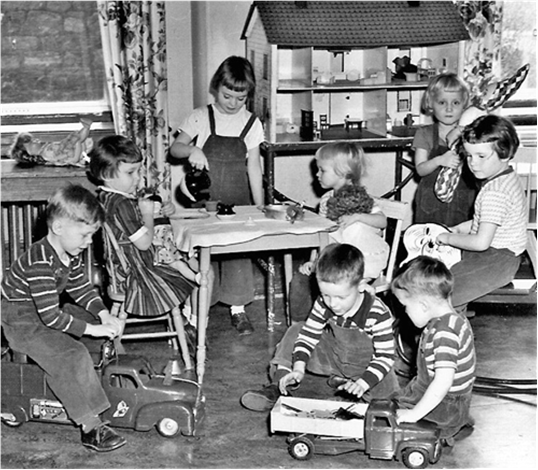
During the 20s and 30s, life went on at the Village. The financial pressures during the depression fostered a reorganization and greater focus on fundraising, and the name was changed to Presbyterian Children’s Village. But the caring nurture of the children continued unabated.
The Great Depression left its mark on the Village, creating large deficits during the mid-30s. Some of the women managers and male advisors questioned whether that kind of organizational structure could meet increasing management needs. Despite some resistance, in 1943, the managers eventually agreed to the formation of a new setup as proposed by the three-presbytery Synod of Pennsylvania.
The changes were dramatic: The new name, Presbyterian Children’s Village; a combined Board of Directors as the ruling entity composed of nine Presbyterian men and 15 women from the erstwhile Board of Managers; and Board of Church Representatives (all women) to be a fundraising auxiliary. A plan was adopted to erase the debt by soliciting unrestricted legacies; part of the property was sold and one cottage was closed; the first federal funds were received through the U.S. Lunch Program; and generous donations were contributed.
In 1953, the Village celebrated its 75th anniversary. At the same time, Southwest Philadelphia was experiencing massive economic, ethnic, and racial changes. The industrial infrastructure which had burgeoned during the two World Wars had largely disappeared. As a consequence, a “White Flight” occurred and within a decade there was a majority of African American families. This transition was accompanied by much racial violence.
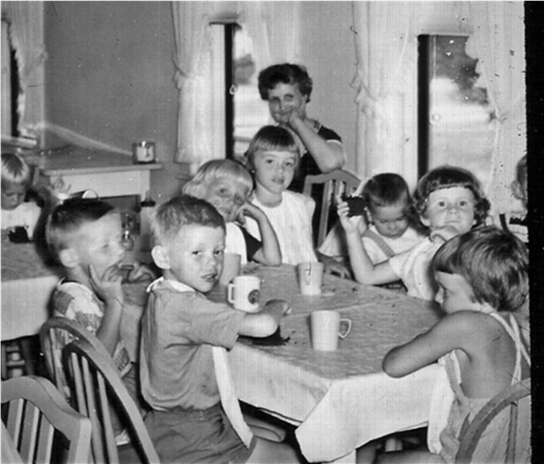
With the social and economic turmoil in northern urban communities swirling around them, orphan children were insulted within the guarded grounds of the Village, all sustained by the hard work of staff and the many dedicated women volunteers of Phila. Presbytery.
The social changes affected the Village in both small ways and in major directions. It had to hire a night watchman, enclose the property with chain link fencing, and escort children to school. Coincidentally, while the new social environment imposed much tension and anxiety for children and youth, fewer and fewer of them were being referred to the Village for orphan care.
On the positive side, In 1960, Samuel Robinson, ACME Groceries’ co-founder and strong supporter of the Village left his 43-acre estate in Rosemont to the Village. Without hesitating, its Directors accepted it as an escape for the children from the city’s noise, pollution, and dangers. A new chapter began for the Village
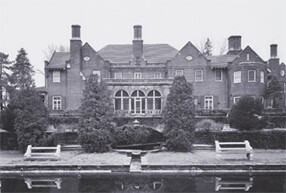
A new chapter begins with the donation of the Rosemont estate of Samuel Robinson, founder of the ACME stores. To the campus were quickly added cottages, an infirmary, chapel, gymnasium and kitchen. The mansion was converted to administrative offices and the superintendent’s residence.
On the beautiful Rosemont campus, seven homey cottages, an infirmary, chapel, gymnasium, and central kitchen were quickly constructed. The elegant Robinson mansion was remodeled for administrative offices and the superintendent’s apartment. On a spring day in April 1960, 72 children moved to the bucolic estate, bringing enormous change for the children including a new church connection (Ardmore Presbyterian) and a new school (Radnor public schools). Back in Philadelphia, the rapidly changing population of troubled children resulted in reliance on government funding and an expanded professional staff.
Referred by county children and youth services, most new referrals were teenagers, rejected, dejected, mistrustful, and suffering from physical and sexual abuse, a societal trend that increased and continues to this day. No longer an orphanage, the Village residential program eventually became a Partial Hospitalization program to reunite the young people with their families or transition to foster care.
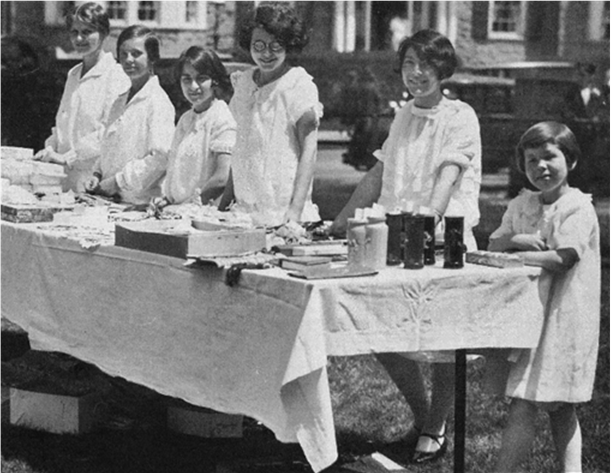
With the Robinson estate vastly improved, in 1960, the 73 orphaned children relocated from Southwest Philadelphia. While the new safe and serene suburban surroundings in Rosemont were a blessing, fewer and fewer children were being referred to the Village.
Some blamed the national trend on the war years, others pointed to changes in societal mores, and still others pointed to drug and alcohol use. On average, the teens stayed two to three years.
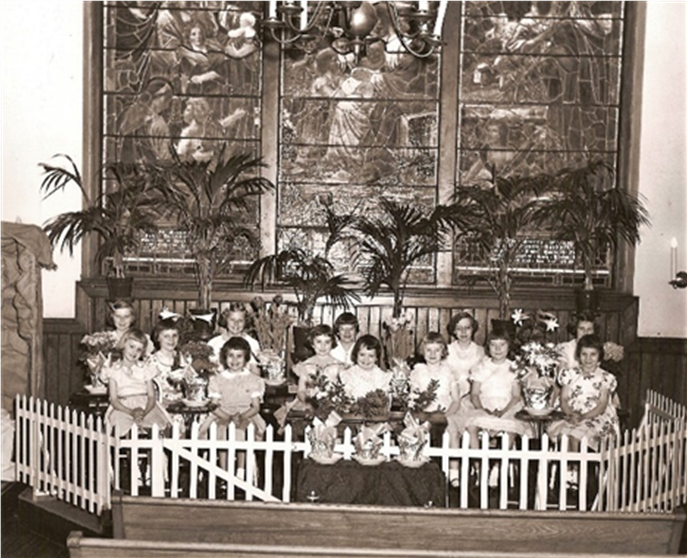
Left behind in the move of the Village to Rosemont was the close relationship with Westminster Presbyterian Church where Orphanage children and worshipped and were nurtured in their faith. Westminster was merged in the 1990s to become New Spirit Community Church and is now the home of The Common Place, the Salt and Light Congregation and and Wayne Presbyterian’s CityLights Ministry
In the sixties, integration also became an issue when the Philadelphia Presbytery asked “Presbyterian Validated Organizations and Institutions” like the Village to integrate or lose the Presbytery’s support and use of its name. The Board struggled with the issue but eventually accepted the request. In 1966, the first mention of “nonwhite” children appeared in the superintendent’s report. Since then the Village has cared for a population from diverse ethnic, religious and economic backgrounds, most of the children from Philadelphia.
A full-time chaplain was hired for the first time in 1975 and church services, Sunday school, and Bible study were held on campus. Chaplains often took Catholic, Muslim and Jewish children to services in the community.
In the words of Loren Preheim, our longtime, devoted director, by the end of the 1970’s the Village had left behind its “Mom and Pop” organization to become “a big business”.
Proof of this change was the decision to formalize the program in response to a federal mandate that dependent children should be placed in Foster Care in their communities and not linger in more expensive residential programs. Other community services were created over the next 30 years in Southwest Philadelphia, home of most Village clients, including Behavioral Health and Wrap-around services, Truancy Prevention services, and Adoption Services. To lessen travel time from Rosemont for staff working in these programs, the Village purchased and modified the underused nunnery of the Divine Mercy Catholic Church on Chester Avenue at 66th Street in Southwest. The new facility was aptly christened the Preheim Center in Loren’s honor.
By the early 1980s, public funding was increasingly insufficient to cover the cost of the new Village services which had increased 33 percent from the prior decade to some $2,300,000. In the five years following the hiring the Village’s first Director of Resource Development resources tripled and happily, the Presbytery’s Bicentennial Campaign contributed another $283,696. Volunteer involvement also changed in the ‘80’s and ‘90’s. The Board of Church Representatives became the Association of Church Representatives (later the Church Relations Council), relinquishing its remaining management responsibilities, while keeping its critical fundraising role. At Rosemont, during this period, many church, business, and service groups pitched in, raking leaves, weeded gardens, and painted and repaired furniture . Church members made afghans for the girls and boys and staged an annual fashion show which ceased by the end of the century.
As psychiatric hospitals began to shut down in the 1980s, patients were moved to less expensive and less intensive care facilities, such as the Village. Rosemont adjusted its services to become a Residential Treatment Center with a semi-Independent living component. Although expensive, it was less costly than the psychiatric hospitals and offered a pathway to a foster or group home or to adoption. As proof of changing needs for troubled children and families, the Board changed its mission statement from to “…heal the spirits of children….” to “…promote the healing….” and added the concept “”racism” to the list of issues causing broken spirits. In 1999 the Village received accreditation from the Joint Commission on Accreditation of Healthcare Organizations. Quite a feat! About that time, the name was changed yet again to “theVillage.”
In the early 2000’s, the Village decided it could be more effective with a single-sex population and began to accept only girls.
Life at the Village was always more than therapy and school. There were proms, sports teams, pizza parties, field trips, cooking and photography classes, equine therapy (thanks to a generous donor), service projects and excursions to a mall, historic site or movie. The Church Relations Council made life richer for the children by wrapping Christmas gifts, filling Easter eggs, making curtains, and helping in many other ways. One mother wrote to Village staff, “Where would we be without PCV?…I thank God for where we are because of the help PCV proved in an ever-worsening troubled family
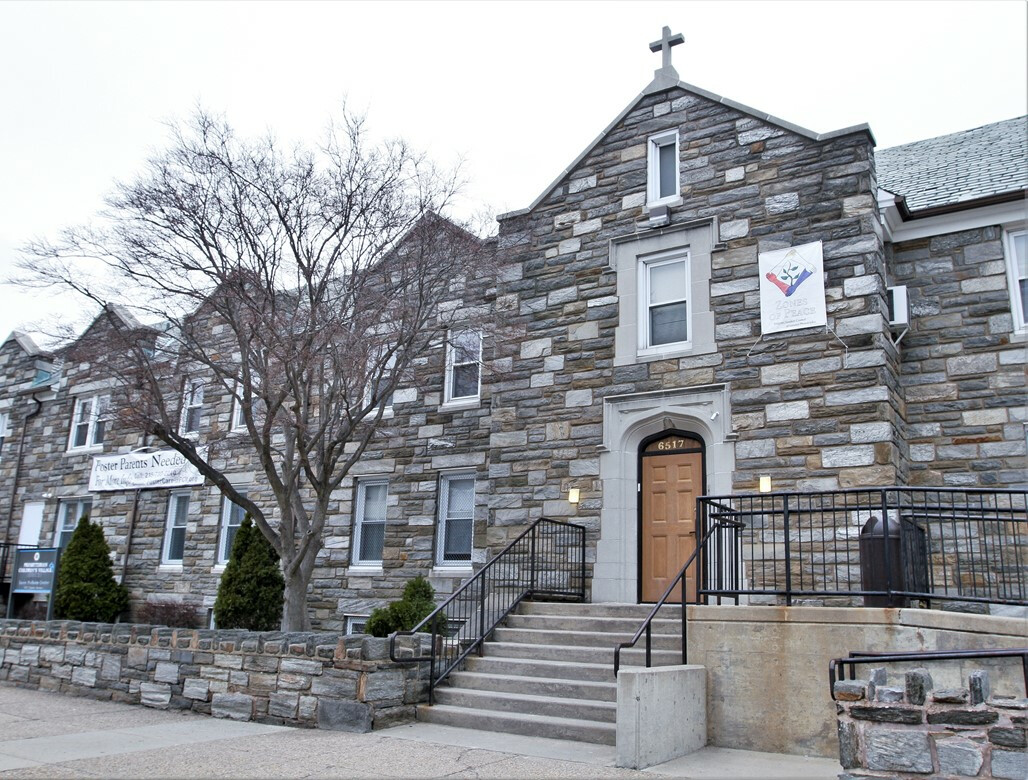
The Preheim Center on Chester Avenue in Southwest Philadelphia, converted from a Catholic nunnery, became the Village’s home for its expanded services to the Southwest community. This outreach is being sustained through the recent merger with Silver Springs – Martin Luther School under the new name: Gemma Services
Just as no one could have foreseen in1878 or 2000 what changes lay ahead, in 2019, after considerable research and heartrending reflection, the Board decided to merge the Village with Silver Springs - Martin Luther School of Plymouth Meeting. Like the Village, Silver Springs has a residential program, but with a school on campus. Like the Village, it also affords a community-based program – theirs focused on Germantown.
The two organizations also deal with different age groups: Silver Springs treats 6 to 14-year-olds, and the Village with 13-18-year-old youth. Both were founded by a faith-based group of women after the Civil War, at Silver Springs by Lutherans in 1859.
The decision’s ramifications are both significant and promising: The new name for the combined institution is Gemma, meaning: in nature, a young plant that thrives independently; and in Italian, something like a gem that is precious. The Village residential program in Rosemont has been closed and the campus will be sold. The Preheim Center in Southwest Philadelphia will remain for Gemma’s community-based programs, the Silver Springs campus will be Gemma’s base and its Germantown center will remain open.
Underpinning this unexpected merger are the two institutions’ similar values, goals, and programing. Practically, the merger will make it possible for both to pool childcare expertise and to continue financially stable into the future. Kristen Gay, former CEO of Silver Springs, now President and CEO of Gemma, looks forward to Gemma exploring new ways to provide psychiatric residential treatment care to youth in small home-like community settings, as well as new ways to help struggling families and children in their homes in Southwest Philadelphia. Recently Kristin learned that Gemma has received state permission to expand Martin Luther from a K-8 school to full high school grade 12.
Consider the impact those 30 Presbyterian women have had on thousands of orphans, troubled children, youth, and their families over the last 144 years – in large part because of the women’s wisdom, compassion, time, and talent, but also because of the passion of hundreds of other volunteers who followed them directors and as members of theVillage Church Relations Council, including Debbie Vogel, Elisabeth Slate, Ruth Murphy, and Lindsay Belzer, four recent and current Wayne representatives. Lindsay is a current Wayne representative on the Gemma council and Elisabeth is on the new joint Board of Directors. Gemma will continue to need the consistent and generous financial and hands-on support our Wayne Church has generously given over many, many years.
The thousands of children helped by the two merged organizations for more than 125 years are all of our children - in the words of Gemma’s Mission and Vision statements:
OUR MISSION – Gemma Services changes lives by transforming hope into action for children, youth, and families facing emotional and behavioral challenges.
OUR VISION – We envision a world in which children, youth, and families feel valued and have the tools to realize their highest potential.

